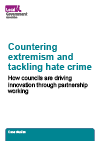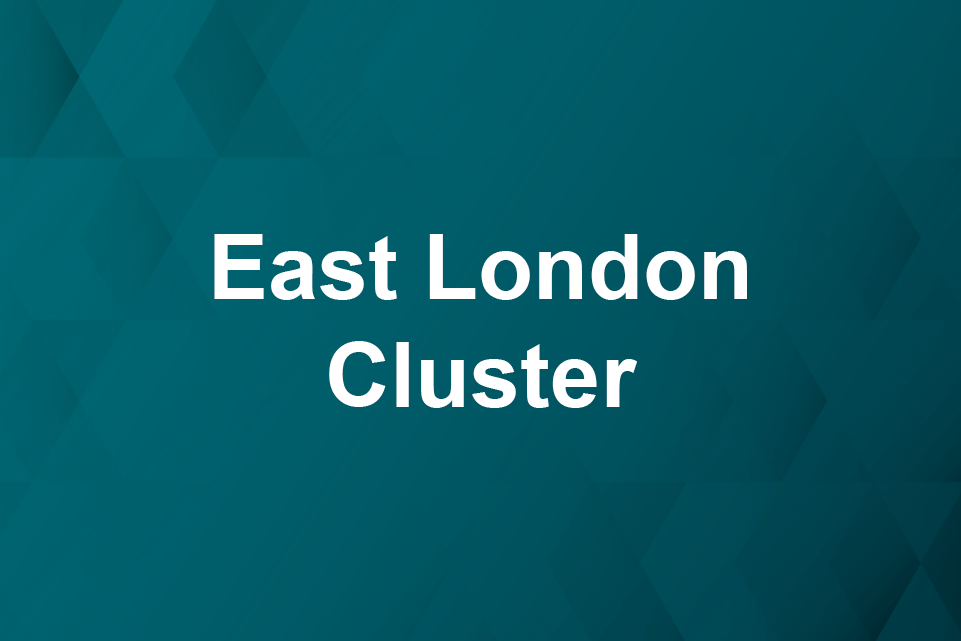
Introduction
Tackling extremism, hate crime, and building cohesion remain important issues for councils. Extremism can have a huge effect on local areas, from devastating terror attacks; to communities divided by harmful ideology, hate and intolerance. If extremist attitudes are left to fester, there can be a destructive impact on social harmony and unity, with communities living in fear, daily lives disrupted, and hatred allowed to prosper.
Working with agency and community partners, councils have a strong track record of responding to community cohesion challenges and are well placed to facilitate partnerships to counter extremism and tackle hate crime. The threats from extremism continue to change, presenting new and evolving challenges – and understanding, responding and building resilience to these requires a dynamic and joined-up approach.
Counter-extremism work plays a vital dual role. Firstly, in addressing the many social harms caused from extremism at a local level, including sowing division across communities, impacting on residents’ sense of safety and place, and affecting local economies; and secondly, as a critical part of early intervention work, in supporting efforts to prevent terrorism through countering ideology and activists that might begin to draw people into radicalisation and criminality.
Whilst radicalisation into supporting terrorist organisations or terrorist acts has perhaps the highest profile of forms of extremism, there is a range of other extremist or polarising behaviour which can impact on local areas. Examples include:
Justifying violence or criminality
For instance, extremists celebrating the violence of terrorist organisations without directly encouraging participation, often through targeting an ‘out group’ – and/or justifying the use of anti-democratic or criminal methods to address their perceived concerns.
Promoting hatred and division
Many hate crimes are motivated by extremist ideologies, with extremist influencers often remaining on the right side of the law whilst promoting intolerance, blaming, dehumanising and ‘othering’ certain groups and conspiracy theories (see below) – this includes the amplification and exploitation of local issues or concerns by other (sometimes national or even international) actors, intent on stoking division. This might manifest as online support, street protest, or criminal activity.
Online extremism
The rapid growth of the internet as a means to share information has led to extremists utilising the opportunities presented to promote extremist content. This can be done passively – by providing material and allowing those interested to access it, or actively, by using the internet as a tool to engage with those vulnerable to radicalisation and groom them into extremism. Algorithms on social media sites can enable a user to develop an echo chamber of extremist content, to the extent that this then normalises extremism to the user. This has been exacerbated due to increased periods of time spent online during the pandemic.
Promoting conspiracy theories
Extremist groups use conspiracy theories as a tool for recruitment and to advance their radical agendas exploiting common uncertainties, fears, socioeconomic issues and mental health disorders amongst those susceptible to indoctrination. These theories foster societal divisions between in-groups and out-groups by exacerbating intolerance against ‘the other’ and delegitimising different voices as being part of the conspiracy. During the pandemic period this has manifested itself in a number of ways with unprecedented levels of interest and support, for example in attacks against 5G masts or in support of anti-vaccination movements, as well as to promote racial hatred against alleged sources of the pandemic.
Encouraging isolation
Extremist ideologies can encourage individuals and communities to distance themselves from mainstream society and sources of information; this environment can allow harmful behaviour to prosper.
Alternate systems of law
Whilst people in Britain are free to follow the structures of their faith, that faith must operate within the rule of law. Extremism occurs where alternate rules of law work in opposition to the tenets of British law.
Rejecting the democratic system
Extremists may seek to coerce people into not participating in our democratic system. Anti-establishmentism can manifest as a distrust in statutory agencies and a loss of faith in democracy and government, perhaps linked to conspiracy theories and spread through online media.
Hate crime
Reported hate crime in the UK has risen every year over the past decade, from 39,000 crimes in 2013 to 114,000 crimes in 2021. Whilst an increase in reporting may be seen as a positive (eg there is an increased trust in the state to respond to reports), short-term trends – including a rise of a third in racially and religiously aggravated offences between 2020 and 2021 – suggests a significant issue damaging community cohesion.
This guidance accompanies a number of case studies which demonstrate a range of activities led by local government in response to emerging issues of extremism and hate crime in their localities. These represent the cutting edge of practice, with creativity driving innovation.
Although the case studies reflect responses to a range of issues, there are consistent themes that emerge, most notably highlighting the importance of working with the community as partners, not as passive recipients of action.
These case studies offer practical advice to local government practitioners when faced with the challenge of countering extremism and tackling hate crime.
There are five consistent elements common across the case studies:
- multi-agency working
- information and intelligence
- community engagement and development
- co-production
- communication.
Multi-agency working
All the case studies saw local government practitioners consider which agencies would share their problem. In Kent the County Council worked with Folkestone & Hythe District Council to pull together a partnership with new organisations including Border Force, the Home Office and accommodation providers to defuse tensions stoked by far-right activists around asylum seeker housing.
Finding commonalities of purpose and exploring the mutual aims of organisations is a powerful way of developing partnerships in response to issues. Kent used a strong governance arrangement to manage the relationship between organisations, with an effective partnership based on mutual trust, respect, accountability, collaboration and meaningful decision making.
Councils have long been at the heart of facilitating partnership responses to threats to public safety. Councils organise community safety partnerships and safeguarding boards as part of their statutory functions, and every council in the country develops bespoke partnerships in response to local issues.
Generally these partnerships are comprised of statutory agencies, but the evidence from the case studies demonstrates the added value of developing partnerships with non-traditional partners, including businesses, faith, and community groups. These groups might be pre-existing, or they might come together as a result of a council-led initiative. In Brighton, a project to tackle hate crime known as the Upstander project led to the creation of new self-constituted community groups, able to drive an agenda independently without council support, following an investment in capacity building from the local authority.
The basic principles of multi-agency working are:
- information sharing
- joint decision making
- coordinated intervention.
The case studies demonstrated the need for trust between partners, exemplified by a culture where information can be shared freely (whilst within the bounds of information governance – see below) to help partners understand a situation and derive joint decisions to solve the issue. Once these decisions are made, partners should then work together to ensure that their responses to the issue are co-ordinated, complementary and (where possible) delivered together with a unity of purpose.
Finding the confidence to incorporate third sector organisations and community groups into this landscape is crucial to embedding resilience into communities.
Information and intelligence
These case studies highlight the importance of utilising partnership information to drive activity. This includes strategic information to highlight an issue and corral resources, and tactical intelligence to underpin decision making around activity. In Nottingham the smart use of data demonstrated that hate crime was a significant issue for the city, and provided the support for activity targeted not only to specific neighbourhoods and communities, but even individual premises.
The sharing of information across agencies and partnerships is crucial to success. Without information exchange it is impossible to understand the full complexities of an issue and agree options for meaningful intervention. The analysis of data across agencies helps to identify emerging tensions and prevent issues from escalating, making for more efficient use of resources.
Whilst information is a hugely valuable tool to any partnership, great care must be taken with the governance and security of the information entrusted to partners – especially personal information. Information sharing agreements can be very useful tools to set terms of reference for the exchange, storage and use of information. Organisations should be particularly careful when sharing information with faith and community groups, as these may lack the safeguards inherent in public sector organisations.
Information exchange is bound by the Seven Golden Rules, as per the Government’s Information Sharing guidance (necessary, proportionate, relevant, adequate, accurate, timely, and secure).
The Kent case study shows the power of information exchange across a range of agencies (national, regional, local), third sector organisations, private providers, and communities. Sharing information in a measured yet transparent manner helped to tackle misinformation, provide reassurance, and highlight positive action.
Community engagement and development
Community engagement is the active participation of local residents and community groups in the decisions that affect their lives, and this is perhaps the most consistent theme to emerge across the case studies. Many case studies highlighted innovative approaches to opening dialogue with communities, with councils empowering communities to own issues by putting them at the heart of decision making and having ownership of community resources to enable self-determination.
Brighton developed an ‘Upstanders Network’, empowering the community to reject extremism by being flexible and adaptive to allow and support the community to deliver the project they wanted to in the manner of their choosing.
Ensuring frontline workers understand the principles of community engagement enables the mainstreaming of engagement work by empowering them to undertake direct engagement alone, rather than rely on ‘specialists’.
Community engagement and support – and by extension, community development as a result of engagement – brings a range of benefits to an area. These can be divided into benefits to the council, to the community, and to citizens. The LGA’s Councillor Workbook on Neighbourhood and Community Engagement is a valuable resource to those seeking to develop a community engagement programme.
Find out more on the benefits to each area below.
As well as the above, for any area seeking to develop meaningful community engagement, Herefordshire Council’s 10 Principles for effective community engagement listed below should help create strong, resilient communities who feel less isolated and more empowered as a result.
- The engagement is effectively designed so that it will make a difference.
- Encourage and enable everyone affected to be involved.
- Plan its delivery in a timely and appropriate way.
- Work with relevant partner organisations.
- Information should be jargon free, appropriate and understandable.
- Make it easier for people to take part.
- Enable people to take part effectively
- Engagement is given the right resources and support to be effective.
- People are told the impact of their contribution.
- Reflect on past experiences to improve your next round of consultation and engagement.
Good community engagement can help tackle difficult topics and address intolerance and extremism as a result, and the Nottingham case study shows the value of this.
The LGA has also produced a comprehensive toolkit and case studies on effective community engagement.
Co-production
Co-production is an approach to community engagement which sees all people as having skills and expertise to offer. Central to co-production is the realisation that you as a council need the input and insight of residents as much as they need you and that there are skills which people in the community have which can be built upon. This moves the council’s role away from delivery and towards enabling mutual relationships which will support this approach. The successful use of co-production is common across many of these case studies and sees professionals and citizens working together to design, plan and deliver support together. The role of the local authority here is to facilitate rather than to deliver.
In Leeds the local authority provides training and support to a potentially vulnerable community whilst ensuring that the community retains a sense of ownership over local issues and are supported to choose the form and nature of their responses. This will embed the response into the community, meaning the impact of the work will continue long after statutory bodies have been involved.
Co-production means professionals and citizens sharing power to design, plan and deliver interventions together. In countering extremism this means empowering citizens to recognise the issues and consider how they feel interventions could be developed and applied to make communities more resilient to extremism.
There are six principles of co-production:
- recognising people as assets
- building on people’s capabilities
- developing two-way, reciprocal relationships
- encouraging peer support
- blurring boundaries between delivering and receiving services
- facilitating rather than delivering.
Co-production can be challenging for agencies who have long delivered for communities, as it requires a cultural change to delivering with communities. Co-production is an evolutionary stage ahead of community engagement and consultation, it utilises the skills and experiences of residents, not just asking for their ideas, insights and opinions.
Communication
Being able to communicate effectively with communities is key to demonstrating the rejection of extremism and hate crime and to highlight the leadership role of the local authority. Experiences in many areas demonstrate the importance of good communication and engagement with communities, and in ensuring that agencies are part of the conversation about difficult issues. The case studies demonstrate an innovative range of communications methods; in Durham the partnership worked with college students to create videos and learning opportunities to help residents understand the risks of cyber-enabled crime, and Portsmouth delivered online training to help upskill residents to identify and critically evaluate extremist messaging.
Communities digest information from a broad range of media in the modern age, and a holistic approach to this, using the full breadth of opportunities available, helps councils reject hate, avoids leaving a vacuum which other more extreme voices might fill, and informs and reassures communities.
Given the modern diversity of media and the many different means within which communities receive information, a dedicated communications strategy can be vital in ensuring key messages go to the right people at the right time. A strong communication strategy will set out how communities are engaged, and should be based upon a segmentation model; recognising that different parts of the community will access, digest and respond to content differently, and targeting messaging accordingly.
The OASIS model can help organisations develop a basic communications strategy:
Objectives
Consider what the campaign is aiming to achieve and set objectives to understand whether or not this has been achieved.
Audience
Who is the campaign aimed at? How well do you understand them? Where are you getting your data from to inform this?
Strategy
Use the insight from your audience work to inform your strategy and set out your approach. You will need to design communications relevant to different stages of your journey.
Implementation
Once you have defined your approach, set our how you will deliver your communications and what tactics you will use.
Scoring
Monitor outputs and outcomes through your campaign and evaluate it once complete.
British Future has also produced some useful guidance on communications planning Calling out hatred and prejudice. The LGA has also published resources for elected members on online communications and handling abuse and harassment in this space.








